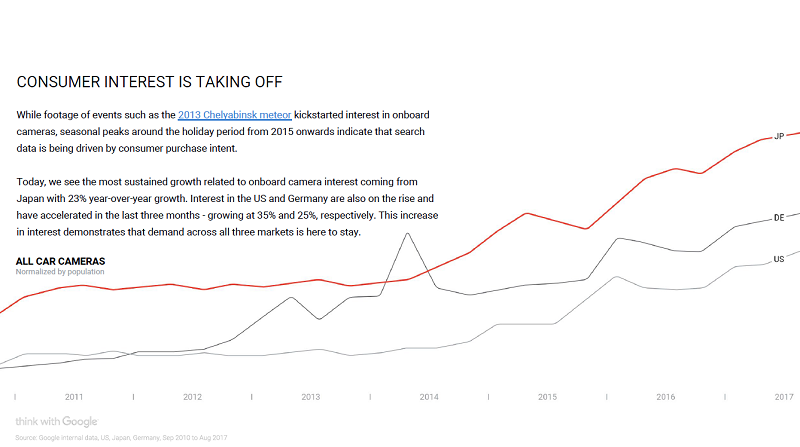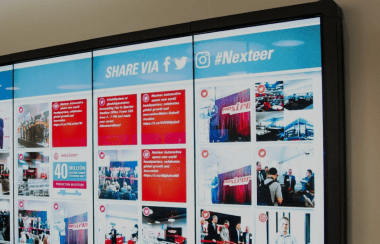Introduction
In general, Fleet Management is the management of commercial motor vehicles for particular end use, such as public taxi services, delivery services, rental car services and more. In the past, “Fleet Management” mostly implied keeping a track of assets and management of optimal route planning for drivers. Traditionally, commercial vehicles were fitted with specialized hardware, such as OBD devices, custom telemetry units and GPS devices that would help drivers and dispatchers track and communicate.
Over time, generalized devices such as smartphones began replacing custom hardware devices and brought down the overall cost of ownership for the fleet management companies while also introducing smarter/more powerful features compared to custom hardware. For example, a single smartphone could replace a GPS, a speed tracker, and a 2-way communication device with the dispatchers. With the advent of intelligent algorithms in apps, these smartphones are also becoming capable replacements for quality of driving that traditional OBD devices would help perform, such as measuring the quality of driving by analyzing breaks, hard turns, sudden acceleration and more. While these don’t eliminate the need for OBD (fault diagnostics being one area where one still needs such hardware units), they help introduce far better analytics at a lower cost. The automotive insurance market is aggressively introducing UBI (Usage Based Insurance) schemes that offer significant financial incentives to users who install their app on their smartphones while driving. The apps help the insurance company better measure driver quality, send early alerts, etc., while saving users much money in premiums.
While a lot of innovation is currently going into driving analytics, driver quality and apps, there is another area that is of significant interest to fleet operators: Accident/Infraction management
The annual accident rate for commercial fleets is about 20%. Fleet accidents have the most expensive injury claims for business with an average cost of about $70,000 per accident [1] (with other reports [2] sighting up to $500,000 per incident)
In North-America alone, in 2016, more than USD 700 million in claims were recorded against trucks and other commercial vehicles [3]. This is turn skyrockets the cost of insurance cover for this industry. This is best highlighted in the following quote from Saia President and CEO, Rick O’Dell. Discussing key cost trends in the firm’s 2016 earnings release, Saia President and CEO Rick O’Dell said one significant expense item was its claims and insurance line, which increased by more than $4 million in the fourth quarter versus the prior year.
“The increase was not the result of one or two major accidents; rather, it reflects the general inflationary trends in the costs of settlement and litigation in the trucking industry.”
One of the key reasons for accidents is driver behavior – negligence, distraction, not following safety rules. To help reduce such issues, ELD devices were recently mandated in North America to help log hours and similar issues. However, HSC believes machine learning-powered Video Analytics can add a significant boost to using technology to help identify problems more accurately and quickly.
The Case for Video Analytics in Fleet Management
Google’s 2018 Automotive trend report highlights globally, what we as consumers are seeing all the time. The rise of in-vehicle dash-cameras.

Figure1 Car Camera Adoption Growth (source Google 2018 Automotive Trends report)
Advantages of Video-enabled Devices
Specific to fleet management (i.e. commercial vehicle deployment situations), a comment from C.J. Discroll & Associates puts it succinctly:
One of the real trends we’re seeing is the increased use of video,” Driscoll told Automotive Fleet. “Video brings in another dimension to analyze driver behavior. It also helps reduce liability. Video doesn’t lie.
(source: Telematics Market Expected to See Explosive Near-Term Growth)
That being said, there are other advantages to video-enabled devices:
- Most of these video units are not simple cameras. They are user smartphones that have an app installed. These units are used as regular phones, and when a fleet operator starts a drive, they plug it into a dashboard holder.
- This means that in addition to recording video feeds to document infractions, this single device is capable of recording:
- Vehicle acceleration (accelerometer)
- Measure distraction (gyroscope + magnetometer give an accurate outcome on how often the user picks up the phone, reorients it, etc. during a drive)
- Given these phones also have BT/BTLE capabilities. They are also able to connect wirelessly to BT/LE enabled OBD adapters to get the engine and other related telematics data that are not possible to get via phone alone (like, say, an engine overheating indication)
In other words, these devices have the capability of becoming a “liability analysis hub” inside a vehicle, where video plays a significant role in documenting evidence, along with intelligent machine learning algorithms on the video, coupled with mobile and OBD sensors (optional) gives the enterprise a robust and automated mechanism to identify infractions, take precautionary measures to prevent future incidents and also help reduce operating costs of specialized hardware. It’s a win-win for all sides, both in terms of reducing costs and increasing the accuracy of violations.
HSC and Video Analytics:
HSC’s core focus is to work with Video Analytics and Fleet Security vendors and develop advanced machine learning solutions that are capable of analyzing large pools of recorded video to quickly identify relevant infractions (violations). On average our clients typically record over 1500 hours of video every single day across their vehicles. Being able to sift through these videos without automation is an impossible task (1500 hours would take 187 people working 8 hours a day to fully scrub. What vendors often do is “spot check” – they only check around 30-40% of the video feed based on other triggers like time of day or external sensors. Even then we are talking about a team of around 50 people and we miss several infractions that don’t trigger sensors, like the driver failing to stop at a pedestrian crossing when people are present).
HSC works with such vendors to analyze their videos to look for “infractions”, which go beyond standard machine learning models. It is no secret that computer vision today has advanced to a point where algorithms to better in identification of objects than the human eye (the major milestone here started with AlexNet [4] (with fundamentally influential papers like LeCun et. al. where the core concept of gradient-based learning was discussed [5], but since then several academic benchmarks for different categories have been published [6]).
However, as good as these models are, it is not of much use for mass analysis of ‘infractions. For example, it is not sufficient to know if we detected a red light. What we are interested in knowing is if the driver did not stop at the red-light intersection. That is a violation.
Similarly, it is not sufficient to know that we detected 5 people ahead of us. It is important to know if the driver was advancing forwarding while those people were present and there was a pedestrian crossing on which they were walking on. That is a violation.
There are many other use-cases like this. HSC specializes in working with vendors to customize such infraction algorithms. HSC offers:
- CIVA – a core video image analytics pipeline that forms the “core” of our video analysis offerings
- FIVA – a specialization on top of CIVA that has custom algorithms for fleet video analytics
- HSC also works with vendors to develop other sensor-based solutions for driving analytics
Conclusion
The video analytics market for fleet/traffic/driver management is undergoing an explosive growth phase. Video analytics, in general, has revolutionized every vertical its been applied to so far (Security and Surveillance, Medical imaging for disease detection, IoT fault detections, etc.).
“Vehicle-related analytics” is next and there is no question in our minds that over the next 2-5 years, video analytics will take a primary role in not just optimizing operational aspects but also will create new avenues of revenue by enhanced video-enabled analytics.
If you are looking to work with a software partner to help you with video analytics around your enterprise fleet/vehicle deployment, please contact us.
References

 Product Engineering Services Customized software development services for diverse domains
Product Engineering Services Customized software development services for diverse domains
 Sustenance Engineering Going beyond maintenance to prolong life of mature products
Sustenance Engineering Going beyond maintenance to prolong life of mature products
 Managed Services Achieve scalability, operational efficiency and business continuity
Managed Services Achieve scalability, operational efficiency and business continuity
 Technology Consulting & Architecture Leverage the extensive knowledge of our Domain Experts
Technology Consulting & Architecture Leverage the extensive knowledge of our Domain Experts

























